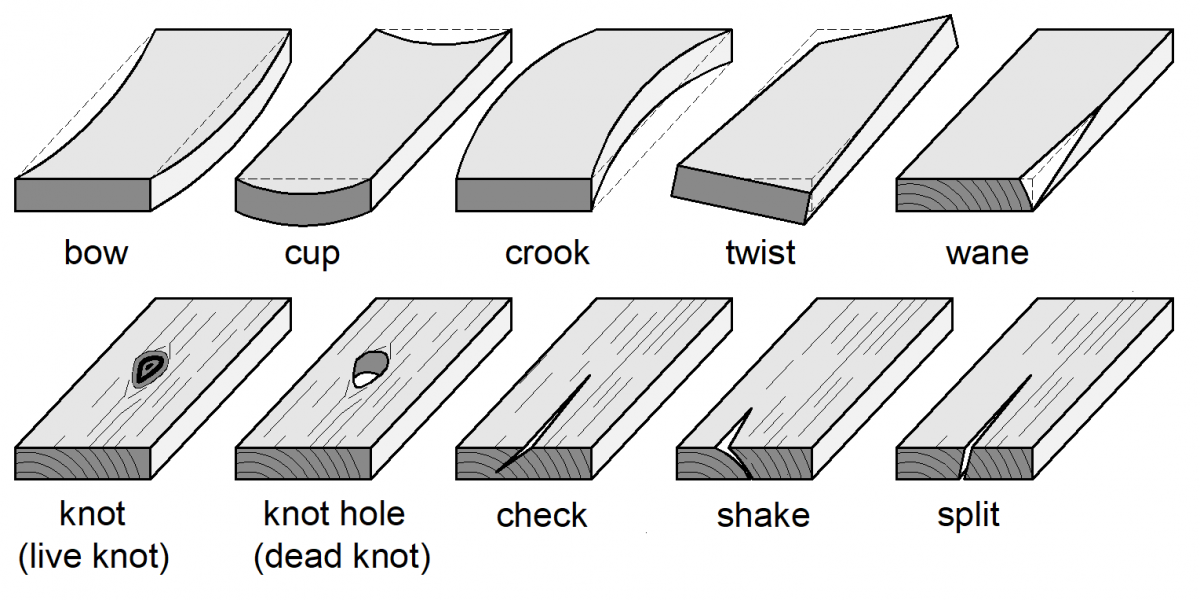Wood defects can have significant impacts on the properties and quality of wood, making it important to understand and address them in wood products and applications.

- Bow: A defect where the wood board is bent along its length, with both ends of the board curving in the same direction. Bow can be caused by uneven drying, poor storage, or improper sawing techniques.
- Cup: A defect where the wood board is warped along its width, with the edges of the board curling up or down. Cupping can be caused by uneven moisture absorption or poor storage conditions.
- Crook: A defect where the wood board is bent along its length, but with only one end of the board curving in one direction. Crook can be caused by uneven drying, poor storage, or improper sawing techniques.
- Twist: A defect where the wood board is twisted along its length, causing the ends of the board to be out of alignment. Twist can be caused by uneven drying or sawing techniques.
- Wane: A defect where the edge or corner of a wood board is missing due to poor sawing techniques or the presence of knots. Wane can affect the structural integrity and appearance of the wood.
- Knots: Knots are defects in wood that occur where a branch or limb grew from the tree trunk. They can be classified as:
- Live knots: Knots with bark or sapwood still attached that is generally mechanically sound but can affect the appearance of the wood. Live knots will not fall out.
- Dead knots: Knots with only the core of the branch remaining that are typically less stable and more likely to affect the wood’s strength. Dead knots can fall out and leave a hole.
- Checks: Checks are cracks that develop on the surface of the wood as it dries. They are typically caused by uneven drying and can affect the appearance and structural integrity of the wood.
- Shakes: Shakes are splits or cracks that occur along the grain of the wood. They can be caused by stresses within the tree or improper handling during processing and can affect the strength and appearance of the wood.
- Splits: Splits are cracks that occur across the grain of the wood. They can be caused by excessive drying or other stresses and can affect the strength and appearance of the wood.
